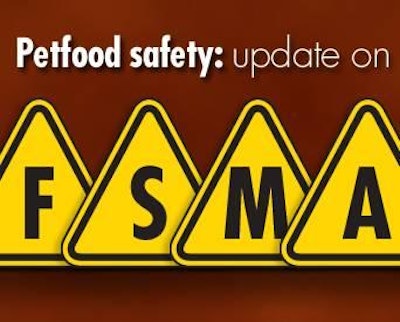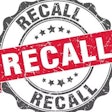
The US Food Safety Modernization Act has reached its first anniversary, after passage in January 2011. Some provisions took effect immediately but to date have had minimal impact on most petfood manufacturers. However, the Food and Drug Administration, sometimes in concert with affected industries—human food, petfood and animal feed—has been busy over the past year drafting new regulations, and some will be implemented very soon. In fact, in November 2011, the US Congress increased FDA’s funding by 3%, including US$39 million for new food safety programs, according to the Washington Post.
Is your company ready for what’s to come?
FSMA provisions already in effect (see Table 1) include emergency FDA access to a company’s records and mandatory recall authority for FDA if a company refuses to voluntarily recall a product. The agency also has to find “reasonable probability” the product is adulterated and that consumption of the food will cause “serious adverse health consequences or death,” said Jessica Wasserman, president of Wasserman & Associations, in her Virtual Petfood Forum 2011 presentation, “FSMA: A Comprehensive Overview.”
Under the Bioterrorism Act, all food producers, including petfood manufacturers, must be registered with FDA. Another immediate provision of FSMA is suspension of that registration if a product manufactured, processed, packed or held by that facility has a reasonable probability of causing serious adverse health consequences or death. In addition, FSMA allows for administrative detention of district director or higher-level executives of the company, expanding on a provision of the Bioterrorism Act. Yet Wasserman stressed that specific regulations are to come and much is still unknown.
According to Wasserman, FDA priorities for FSMA that affect petfood appear to be:
- Preventive controls;
- Foreign supplier verification and imported foods and ingredients; and
- Third-party accreditation standards for imported foods.
Under the FDA Amendment Act of 2007, Congress instructed FDA to issue mandatory requirements on production of petfood. FDA has not yet issued these rules but is likely to include them in the preventive controls section of FSMA (Table 1), Wasserman said.
FSMA allows FDA to modify the preventive control requirements for facilities that are “solely engaged in the production of food for animals other than man” or to even fully exempt those facilities, she added. Petfood lies somewhere between human food and animal feed because there is a higher risk of direct human contact with petfood, so FDA may not exempt or modify the preventive control regulations for petfood. For now, petfood companies should be prepared to comply.
Judi Lazaro, director of customer relations for AIB International and also a Virtual Petfood Forum speaker, said that under FSMA, a food safety plan needs five main elements: hazard analysis, preventive controls, monitoring for effectiveness, corrective action and verification. Many of these are included in commonly used programs such as hazard analysis and critical control points (HACCP).
Another safety approach Lazaro recommended is the ICE concept:
- I = identify, introduce, intensify—recognize an issue, then  gain consensus;
- C = control—establish appropriate and timely control within the process environment to protect product and contact surfaces; and
- E = eliminate—develop and implement reasonable and practical solutions that effectively address underlying causes.
Read the details for each step in Lazaro’s presentation.
As part of the focus on preventive controls, FSMA specifies an FDA inspection schedule. High-risk facilities, which FDA has yet to define, Lazaro said, will be inspected at least every three years, while any facility not deemed high risk will be inspected at least every five years. Any sort of complaint or safety problem will increase the likelihood of more frequent inspections or re-inspections, for which the company will probably have to cover the costs, Wasserman added.
To prepare for increased interaction with regulators, Lazaro recommended petfood manufacturers develop partnerships or at least regular communications with state and federal agencies. She also suggested stepping up your own internal inspections and audits. “Remember, these are FDA inspectors and they have access to records, so they inspect and audit, and you should also,” Lazaro said.
Benjamin England, founder of Benjamin L. England & Associates LLC and FDAImports.com LLC and another Virtual Petfood Forum speaker, said FDA inspections of food facilities are increasing not only domestically but especially at foreign plants. By the first anniversary of FSMA (January 4, 2012), FDA will have inspected 600 US facilities and plans to conduct 19,200 foreign inspections by the same date in 2017, he said.
FSMA heavily emphasizes improving the safety and increasing regulation of imported foods and ingredients. “The regulations apply the same, whether the product is destined for human or animal consumption,” Wasserman said.
As part of FSMA’s Foreign Supplier Verification Program (Table 1), every importer must establish a plan that verifies the foreign supplier complies with a hazard analysis and preventive controls program. In addition, England said, FSMA specifies:
- Prior notice, which identifies any country to which a food has been shipped but refused entry (effective upon passage of the law);
- The importer must maintain records for no less than two years;
- Noncompliance is grounds for refusal of an imported article (effective January 4, 2013);
- FDA must establish a voluntary program to expedite importation (Voluntary Qualified Importer Program), with eligibility determined by overall safety of food offered for import; and
- Importers must obtain certification by third-party auditors (designated by FDA) and use an accredited laboratory for certain testing.
Specific regulations for these import-related provisions are due by January 4, 2012, just after this issue goes to press.
Wasserman stressed that as FDA proposes new regulations stemming from FSMA, comment periods are likely to be short—60 days—with no extensions. Watch PetfoodIndustry.com and your other petfood safety information sources for announcements.Â



















